研究成果
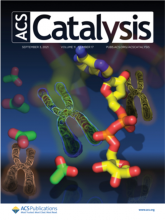
Aug, 2021
O-Acetyl-ADP-ribose (OAADPR) is a signaling molecule identified from the conserved sirtuin reaction in Saccharomyces cerevisiae, involved in the important cellular functions of gene silencing, redox regulation, and aging. Here, we performed biochemical and structural characterization of the yeast Poa1p macro domain in detail, uncovering an unusual deacetylase activity favoring 3″- and 1″-isomers of O-acetyl-ADP-ribose. The unique active-site residues of Poa1p contributing to the distinct substrate specificity thus shed light on the divergent branch of a POA1-like subclass. Moreover, disruption of Poa1p expression in yeast showed a striking sensitivity to transcriptional stress, which implies a physiological role in response to nucleotide depletion. These findings provide biochemical and...
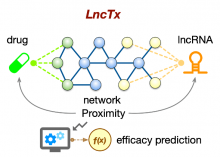
Jul, 2021
LncTx is a network-based method to repurpose drugs that potentially act on lncRNAs in lung cancer. By calculating the proximity between the drug targets and the lncRNA-correlated proteins in the protein-protein interaction (PPI) network, LncTx accurately differentiates anticancer drugs from non-anticancer drugs. Furthermore, the drugs with smaller proximity (proximal drugs) are more effective than the distal drugs. This novel method provides a framework to repurpose old drugs acting on lncRNAs in lung cancer.

May, 2021
Reversal of CD8 T-cell exhaustion was considered a major antitumor mechanism of anti-programmed cell death-1 (PD-1)/ anti-programmed death ligand-1 (PD-L1)-based immune checkpoint inhibitor (ICI) therapy. The aim of this study was to identify markers of T-cell exhaustion that is best associated with ICI treatment efficacy for advanced hepatocellular carcinoma (HCC). Here, we identified a 9-gene signature (LAG3, CD244, CCL5, CXCL9, CXCL13, MSR1, CSF3R, CYBB, and KLRK1) which was functionally associated with CD8 T cell exhaustion. This 9-gene signature had similar predictive values for patients who received single-agent or combination ICI therapy and was not associated with prognosis in HCC patients who received surgery, suggesting that it may outperform other T-cell signatures for...
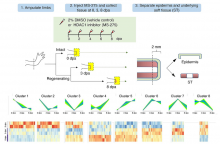
May, 2021
Sophisticated axolotl limb regeneration is a highly orchestrated process that requires highly regulated gene expression and epigenetic modification patterns at precise positions and timings. We previously demonstrated two waves of post-amputation expression of a nerve-mediated repressive epigenetic modulator, histone deacetylase 1 (HDAC1), at the wound healing (3 days post-amputation; 3 dpa) and blastema formation (8 dpa onward) stages in juvenile axolotls. Limb regeneration was profoundly inhibited by local injection of an HDAC inhibitor, MS-275, at the amputation sites. To explore the transcriptional response of post-amputation axolotl limb regeneration in a tissue-specific and time course-dependent manner after MS-275 treatment, we performed transcriptome sequencing of the epidermis...
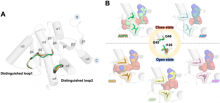
Jan, 2021
The macro domain is an ADP-ribose (ADPR) binding module, which is considered to act as a sensor to recognize nicotinamide adenine dinucleotide (NAD) metabolites, including poly ADPR (PAR) and other small molecules. The recognition of macro domains with various ligands is important for a variety of biological functions involved in NAD metabolism, including DNA repair, chromatin remodeling, maintenance of genomic stability, and response to viral infection. Nevertheless, how the macro domain binds to moieties with such structural obstacles using a simple cleft remains a puzzle. We systematically investigated the Middle East respiratory syndrome-coronavirus (MERS-CoV) macro domain for its ligand selectivity and binding properties by structural and biophysical approaches. Of interest, NAD,...
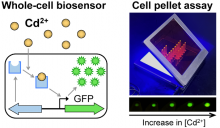
Jan, 2021
Whole-cell biosensors are useful for monitoring heavy metal toxicity in public health and ecosystems, but their development has been hindered by intrinsic trade-offs between sensitivity and specificity. Here we demonstrated an effective engineering solution by building a sensitive, specific, and high-response biosensor for carcinogenic cadmium ions. We genetically programmed the metal transport system of Escherichia coli to enrich intracellular cadmium ions and deprive interfering metal species. We then selected 16 cadmium-sensing transcription factors from the GenBank database and tested their reactivity to 14 metal ions in the engineered E. coli using expression of the green fluorescent protein as the readout. The resulting cadmium biosensor was highly specific and showed a detection...
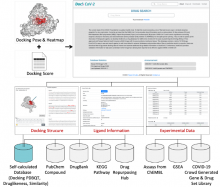
Jan, 2021
The current state of the COVID-19 pandemic is a global health crisis. To fight the novel coronavirus, one of the best-known ways is to block enzymes essential for virus replication. Currently, we know that the SARS-CoV-2 virus encodes about 29 proteins such as spike protein, 3C-like protease (3CLpro), RNA-dependent RNA polymerase (RdRp), Papain-like protease (PLpro), and nucleocapsid (N) protein. SARS-CoV-2 uses human angiotensin-converting enzyme 2 (ACE2) for viral entry and transmembrane serine protease family member II (TMPRSS2) for spike protein priming. Thus in order to speed up the discovery of potential drugs, we develop DockCoV2, a drug database for SARS-CoV-2. DockCoV2 focuses on predicting the binding affinity of FDA-approved and Taiwan National Health Insurance (NHI) drugs with...
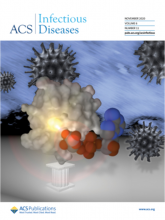
Sep, 2020
The pandemic outbreak of a novel coronavirus, severe acute respiratory syndrome coronavirus 2 (SARS-CoV-2), has threatened the global public health and economy since late December 2019. SARS-CoV-2 encodes the conserved macro domain within nonstructural protein 3, which may reverse cellular ADP-ribosylation and potentially cut the signal of a viral infection in the cell. Herein, we report that the SARS-CoV-2 macro domain was examined as a poly-ADP-ribose (ADPR) binding module and possessed mono-ADPR cleavage enzyme activity. After confirming the ADPR binding ability via a biophysical approach, the X-ray crystal structure of the SARS-CoV-2 macro domain was determined and structurally compared with those of other viruses. This study provides structural, biophysical, and biochemical bases to...
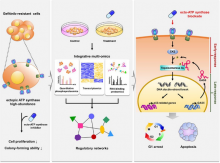
Aug, 2020
The EGFR tyrosine kinase inhibitor gefitinib is commonly used for lung cancer patients. However, some patients eventually become resistant to gefitinib and develop progressive disease. Here, we indicate that ecto-ATP synthase, which ectopically translocated from mitochondrial inner membrane to plasma membrane, is considered as a potential therapeutic target for drug-resistant cells. Quantitative multi-omics profiling reveals that ecto-ATP synthase inhibitor mediates CK2-dependent phosphorylation of DNA topoisomerase IIα (topo IIα) at serine 1106 and subsequently increases the expression of long noncoding RNA, GAS5. Additionally, we also determine that downstream of GAS5, p53 pathway, is activated by ecto-ATP synthase inhibitor for regulation of programed cell death. Interestingly, GAS5-...
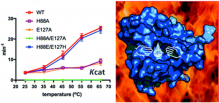
Jul, 2020
The common mechanism of N-acetyltransferases (NATs) is a water-mediated catalysis, which is not conducive to thermophilic acetyltransferases. The crystal structure of SsArd1 shows an ordered catalytic water molecule in a trap formed by the residues H88 and E127. Structure-guided mutagenesis, kinetic studies and MD simulation indicated that the turnover rates of H88A, E127A and H88A/E127A mutants were low, but that of the H88E/E127H mutant could be restored to the level of the wild type.